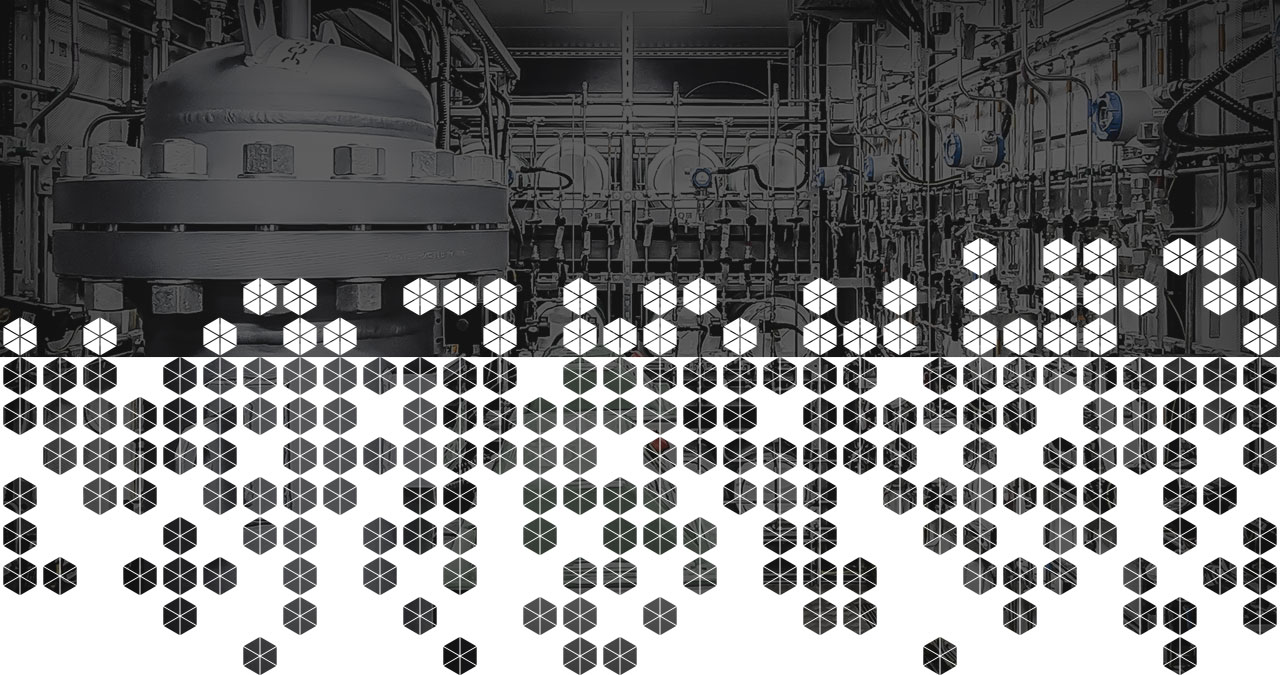
Thermal recombination of organic matter
ACTROM (Analytically Controlled Thermal Recombination of Organic Matter) is a process of thermal recombination of organic matter enabled by process analytical technology based on chromatography.
The designed ACTROM thermal decomposition unit unit with peripherals processes organic wastes and produces gaseous, liquid and solid products of specified quality.
The technology is designed, developed and constructed to be low to zero waste.
The process follows a principle similar to the material cycle in nature (water cycle, carbon cycle, etc.). ACTROM strives to make maximum use of all raw materials and wastes, thus minimizing the generation of its own hazardous waste. ACTROM's technology is designed as a set of solutions to minimise the negative environmental impact of production, maximise the use of waste as a substitute for primary resources and move towards a circular economy.
Thermal decomposition of organic materials, which takes place in induction-heated reactors, is a physicochemical process that occurs in a reducing atmosphere in various stages at temperatures ranging from 150 to 1000°C. These temperatures exceed the limits of chemical stability of organic compounds, resulting in their decomposition and the formation of low molecular weight gaseous and liquid products as well as solid residues.
The gaseous and liquid products undergo multiple stages of washing and separation. During the process, the heated material passes through several stages which are typical of a certain temperature range. At temperatures up to 150°C, free and coarse water evaporates and adsorbed substances (CO2, CH4, C2H6, N2) are desorbed. The first vapours of volatile hydrocarbons can be released from the material.
At temperatures of 300 - 500°C, large amounts of tar vapour are released and water vapour and CO2 from the cleavage of hydroxyl and carboxyl groups also leave the material. In this temperature range, methane is the most evolved gas. At temperatures above 500°C, the tar vapour development ceases and a solid residue (semi-coke) remains in the reactor. At temperatures above 600°C only gaseous products leave the reactor (with increasing temperature the hydrogen content increases and the methane content decreases) and the semi-coke is converted to coke at these temperatures.
The gaseous products leave the reactor and pass through a heat exchanger (contact heat exchanger-separator) where the different fractions are separated. The heavy hydrocarbon fraction (C7+) condenses. The pressure of the outlet liquid products does not exceed 0.5 bar at a temperature <30°C.
The gaseous products are further subjected to dry complex sorbent washing, wet washing and primary drying.
Liquid products undergo a desalting and dewatering process.
In the next step, the gaseous products come to pressurization and further separation in the gas separation and storage module. The resulting separated gaseous products meet the requirements for separated gases in accordance with the analytically determined quality.
The final stage of hydrogen separation involves advanced membrane technology.
The storage pressure of the separated gases is <= 250 bar.
The separated gases are stored in 100 L+ pressure vessels in automatic mode.